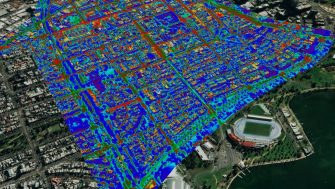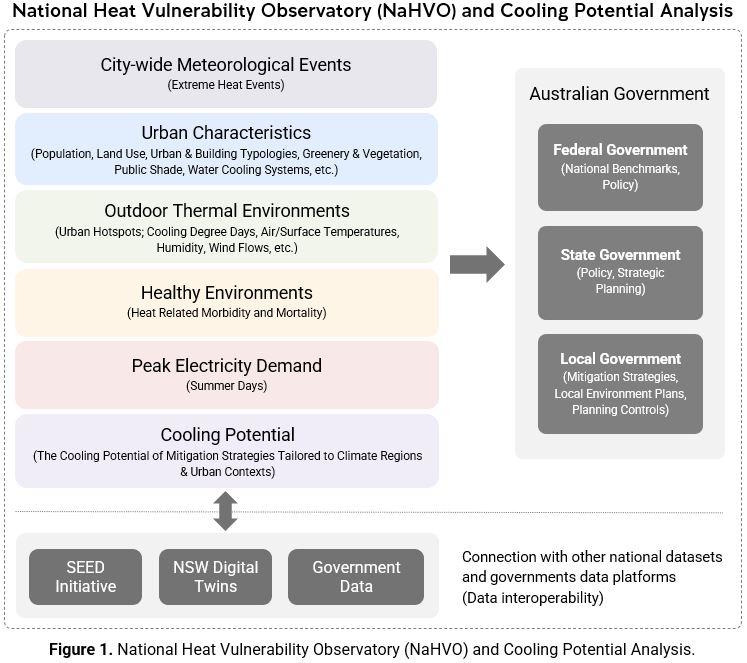National Heat Vulnerability Observatory
Smart and Cool Places Phase 1
Smart and Cool Places Phase 1

This project received a co-contribution from the Smart Places Acceleration Program, part of the NSW Government Digital Restart Fund. The NSW Smart Places Acceleration Program helps place owners - including councils, government agencies, property owners, and joint organisations - partner with the State Government to solve problems and improve the quality of life for communities across regional and metropolitan NSW. It is made possible by a $47 million reservation under the NSW Government Digital Restart Fund.
“Phase 1 of the Smart & Cool Places pilot project, which assesses the vulnerability of towns and cities to extreme heat while exploring strategies to cool neighbourhoods, has been a highly successful project. This initiative marks a significant step forward in using environmental heat sensors to gather crucial data and formulate plans to address various heat-related challenges in local communities.
The standardised approach adopted by the project will facilitate foundational elements of a National Urban Heat Vulnerability Index to be scaled to other cities and towns in NSW and ultimately achieve the long-term goal of having a national heat vulnerability observatory that will be rolled out across Australia.
We are proud to have been part of the team that made this project possible."
Matthew Riley
Director Climate and Atmospheric Science
Science, Economics & Insights | Department of Climate Change, Energy, the Environment and Water
The NSW Department of Planning and Environment in partnership with UNSW High Performance Architecture team seek to address urban overheating in NSW cities and towns by establishing a “National Heat Vulnerability Observatory”. “Smart and Cool Places Phase 1” will develop foundational elements for the observatory, pilot in two NSW cities (Maitland and Dubbo) and identify a plan to scale beyond pilot.
Ultimately (after Phase 1), the national heat vulnerability observatory will be applicable to cities and communities throughout Australia. The approach and design of this digital asset therefore has the future in mind and will be positioned as the “National Heat Vulnerability Observatory”.
The National Heat Vulnerability Observatory (NaHVO) aims to develop rigorous national datasets and an innovative, robust and consistent methodology to report and measure the heat vulnerability issues and cooling potential of Australia’s cities. NaHVO will provide:
Smart and Cool Places Phase 1 will develop a digital capability in NSW to increase the state’s resilience to urban overheating. It will inform the scaling of these approaches to all communities in NSW through the development of digital platforms and standards.
Phase 1 is a pilot of NaHVO using two cities: Dubbo and Maitland. The next step with be a scale up of NaHVO to integrate Australia’s largest cities.

National Heat Vulnerability Observatory (NaHVO) Project Report
Previous Research Projects
Award for Excellence
In the Media (to update)